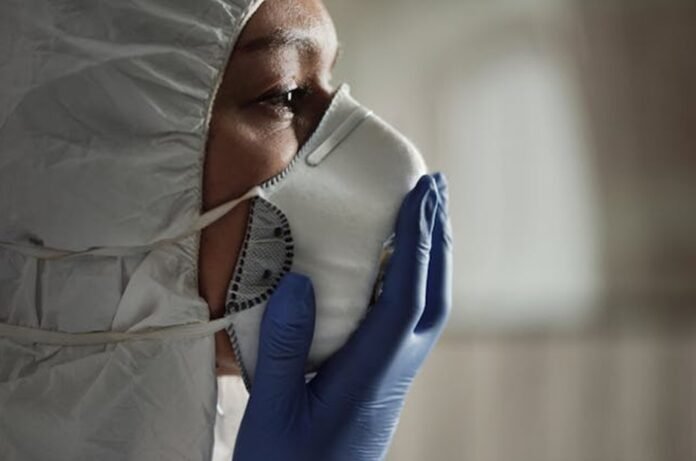Biohazard cleanup is complex, requiring careful attention to detail. The average spill where a home or business owner can simply grab a mop is not sufficient when it comes to what are living organisms or pathogens that pose health risks to those occupying the space.
Biological hazards can include dried blood on floor boards from a violent crime or a blood spill and body fluids seeping in surfaces from an unattended death. These are situations when the everyday person would be out of their element in trying to tackle the cleanup on their own.
This would unnecessarily put their health and safety at risk when a number of Charlotte NC Biohazard Services have first-hand experience with biohazard risks and understand the serious consequences for the public and the environment.
Professional intervention is mandated to safeguard against the spread of infectious materials by ensuring the appropriate protocol is followed for handling, transport, removal, and disposal. The objective is to move in quickly and work efficiently and vigilantly.
Understanding Biological Hazard Cleaning
Biological hazard cleanup in Charlotte, North Carolina, involves decontaminating and cleaning scenes impacted by anything that can present a threat to people, animals, or the environment.
Hazards included in this category range from blood and other body fluids to microbiological and pathological wastes, such as lab cultures and tissues, as well as sharps like needles, which have the potential to cause cuts or punctures.
These materials are dangerous because they are likely to carry bacteria, viruses, or toxins that can lead to disease.
When mishandled or improperly removed and disposed of, exposure can go beyond the affected area into neighboring communities. Visit https://femkejanssen.com/2021/04/28/biohazard-cleaning-tips/ for tips on biohazard cleaning.
The initial source of biohazards could be a violent homicide scene involving a substantial blood spill or a suicide or accidental death with sharp objects.
Medical facilities handle patient samples routinely with the potential for infectious materials, and lab experiments are conducted for research using varied pathogens that generate microbiological waste. In each of these scenarios, there is an inevitable need for biohazard cleanup at some point.
The successful remediation depends on identifying biological agents that present as hazardous. Here are varied types of biohazards.
Blood and by-products
Blood spills, dried blood, and blood stains are unpleasant sights for most people. Blood can carry dangerous pathogens such as Hepatitis and HIV. Bodily fluids are included in this class with comparable health threats. These fluids can include semen, vomit, urine, feces, and so on.
Pathological waste
Many people presume this category comprises only waste from pathology labs, but that’s a misperception. This waste consists of tissues, human body parts, organs, and other waste that is removed at the time of an autopsy or during a surgical procedure.
Specialized knowledge and expertise are critical when handling this type of waste due to the high risk of transmitting disease.
Microbiological waste
Microbiology is studied in a lab setting with infectious materials grown in vials or on agar plates for research purposes.
Sharps
Waste with the potential for causing cuts or punctures, such as broken glass, needles, and blades, are classified as biological hazards primarily because they can expose people to infectious materials with the likelihood of spreading diseases if mishandled.
Each is often responsible for breaking human skin. It should always be assumed that items that come in contact with blood or other body fluids are infectious.
Animal waste
Not only should it be assumed that wild animals carry parasites, bacteria, fungi, or viruses, but also domesticated pets in their waste. The pathogens can lead to life-threatening diseases such as E. coli, Salmonella, and more.
Scenes Requiring Biohazard Cleanup
Some scenarios where biological hazards pose a threat are more common and anticipated. With any incident, specialized North Carolina cleanup technicians are prepared and equipped to successfully remediate the affected area.
Crime scenes
While TV and movies glamorize homicide and crime scenes, the threats posed by blood spills, tissue remnants, and bodily fluids if mishandled are severe.
Accidental or unattended death
The circumstances leading to an accidental or unattended death are unfortunate. The infectious material in the affected area begins to decompose quickly, leaving an unhealthy and unsafe environment that requires specialized technicians to remediate and restore for occupancy. Go here for guidance on protecting property owners in the case of a tenant’s death.
Final Thought
Biohazard cleanup involves much more than a property owner grabbing bleach and a mop. Professional technicians learn to effectively and safely use industrial-grade chemicals for thorough decontamination to prevent traces of infectious materials from remaining when the cleanup process is complete.
Biohazard cleanup services in Charlotte, North Carolina, have a thorough comprehension of the behavior of varied types of biological hazards and the dangers these present to human health and the environment.
The technicians are fully prepared with effective hazard waste management to secure each unique incident presented to them.
